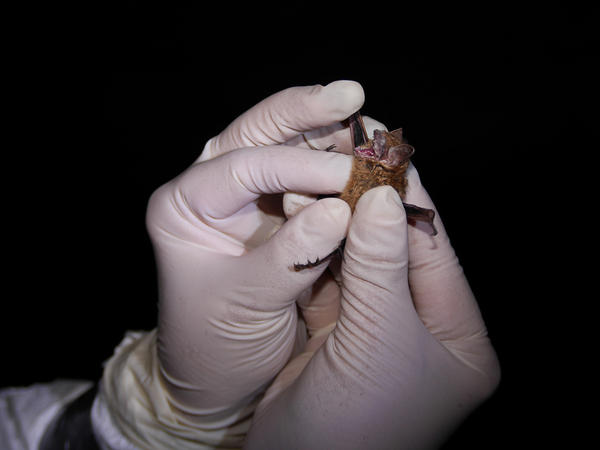GSU Researcher Finds Possible Treatment For Bat-Killing Fungus A Georgia State University researcher may have found a treatment for wh...
A Georgia State University researcher may have found a treatment for white-nose syndrome, a disease that’s decimating North American bat populations and threatens some species with extinction.
White-nose syndrome has killed almost 6 million bats in Canada and the United States since it arrived about a decade ago. But Tuesday, scientists and researchers gathered outside the Mark Twain Cave Complex in Hamilton, Missouri, to release some of the first bats to survive the disease into the wild.
Among those in attendance was Dr. Chris Cornelison, a GSU researcher who helped discover what could be a treatment for this so-far-incurable disease.
“It is a significant milestone as we continue to battle this devastating epidemic,” Cornelison says.
Since 2012, Cornelison and his team have been working with a common North American bacteria – Rhodococcus rhodochrous – which is sometimes used in food preservation. Cornelison found the bacteria could also inhibit the growth of the fungus that causes white-nose syndrome. Making this treatment method even more appealing to scientists was the fact that bats wouldn’t have to come into direct contact with the bacteria to be protected from white-nose.
As for how it works, Cornelison said to think of his work like one of the automated air fresheners like those in public bathrooms, the ones that puff out a little scented spray.
“It will continue to emit small concentrations of these chemicals, but unlike in the sanitary example, these aren’t for odor masking. They are for killing and inhibiting pathogenic fungi,” Cornelison says.
Specifically: killing and inhibiting the fungus that’s killing the bats.
Over the winter, he and other researchers with the U.S. Forest Service tested the bacteria in four infected caves – two in Missouri and two in Kentucky. Cornelison couldn’t give an exact success rate, but he says it's well above the rate scientists say is needed to stave off extinction.
Still, he says more research is needed to determine whether this is truly a cure.
TAGS: white-nose syndrome bat disease bat disease research








COMMENTS